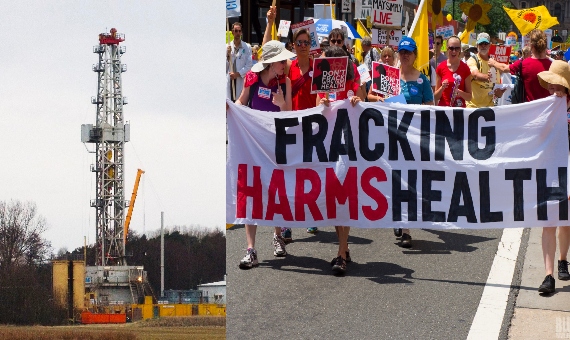The word “fracking” is one that should be avoided at family gatherings, at the risk of provoking a bitter discussion between those who defend hydraulic fracturing for the extraction of hydrocarbons as an energy alternative with a future, and those who consider it an aggression against the environment and communities, as well as an outdated and unsustainable option. But the truth is that in recent years this practice seems to have fallen off the radar. Has its use also declined?
At the height of the golden age of fossil fuels in the 20th century, fracking came on the scene as a way to extract hydrocarbons from underground deposits of shale, a sedimentary rock that contains these deposits in its fissures, but which are difficult to exploit using conventional techniques. The concept of fracturing rock to release oil reserves dates back to the 1860s, when the use of explosives for this purpose was introduced in the USA. Hydraulic fracturing, using liquids, was first employed in 1947 in Kansas, and improvements were progressively added to the process: in the 1950s, the mixture of water, sand and additives began to be developed and eventually became the standard, and in the 1990s horizontal drilling was introduced, allowing the reach to be extended from vertical wells to cover larger areas of land.
As practised today, fracking begins by drilling a vertical well into shale strata, which are typically found at depths of between 1,500 and 6,000 metres. Once these deposits are reached, the borehole is rotated 90 degrees to continue parallel to the ground for a further 1,500 to 2,000 metres. A steel pipe, usually coated with cement, is then inserted to seal the borehole to prevent seepage into aquifers. Small explosive charges are then set off with a perforating gun to puncture tiny holes through the horizontal section of the steel casing and into the rock. Between 10,000 and 30,000 m3 of fracking fluid is then pumped into the well at high pressure. This fluid, 98% of which is water, to which certain chemicals are added, is forced through the tiny holes in the casing and cracks open the shale rock. The mixture also contains sand and ceramic particles as a proppant additive, which prevents the fissures and cracks in the shale rock from closing. Finally, the natural gas that has been released from the rock flows to the surface.
An imitated but controversial technique
Fracking has been promoted in the USA in particular as a strategic route to energy independence. Between the end of the 20th century and the beginning of the 21st century, hydrocarbon extraction in the US was declining alarmingly, forcing the country to import more oil than was being produced on its own soil. This situation has changed radically in the past decade, thanks mainly to the latest improvements in fracking techniques that have brought about a revolution in the extraction of previously inaccessible deposits. In 2017, the US overtook Saudi Arabia as the world’s leading oil producer, and today it is also the world’s leading producer of natural gas. It is therefore not surprising that other countries have studied or implemented this extraction technique, with China and Canada having implemented it to the greatest extent.

However, fracking is surrounded by a perennial controversy over its environmental and health effects. The chemical additives introduced can contaminate groundwater and surface water, and the large quantities of water used for fracking that flow back to the surface contain heavy metals, radioactive elements and other potentially toxic compounds. In addition, studies show that fracking can cause seismic movements even tens of kilometres away.
Although the industry tries to minimise these impacts, the fact is that the growing unpopularity of fracking has led several countries to ban it—including some Canadian provinces and US states—or to declare moratoriums. On top of all this is an indisputable reality: fracking or no fracking, the climate emergency demands a firm commitment to the path of abandoning fossil fuels.
Comments on this publication